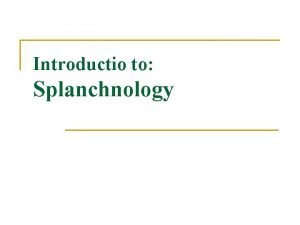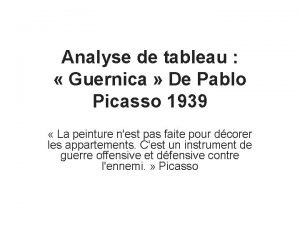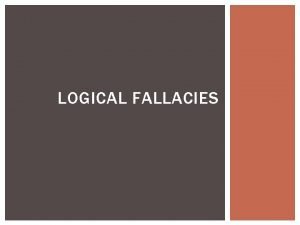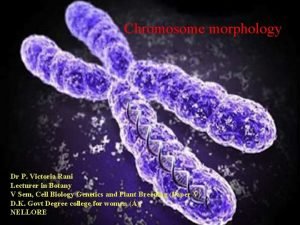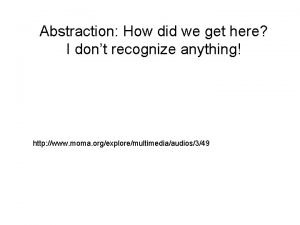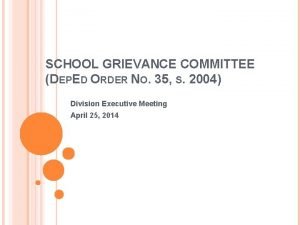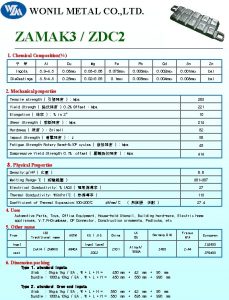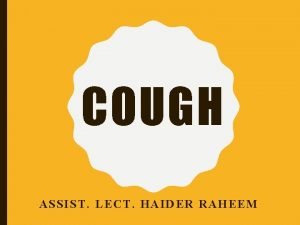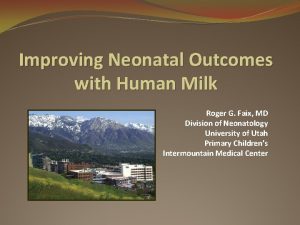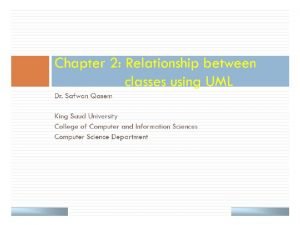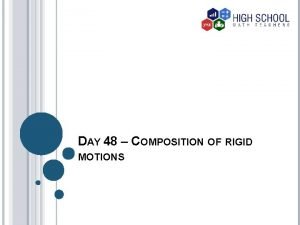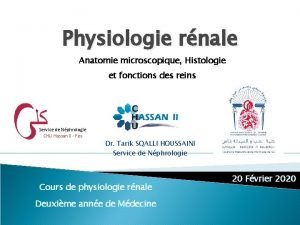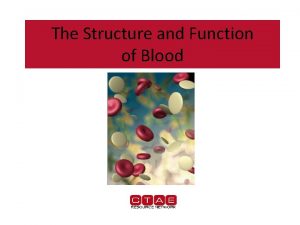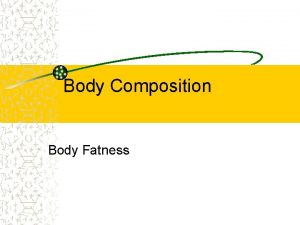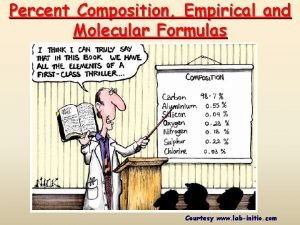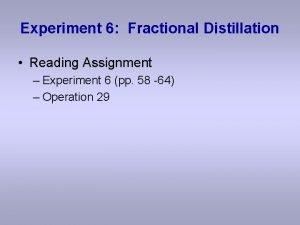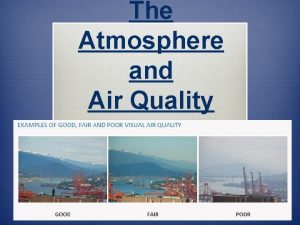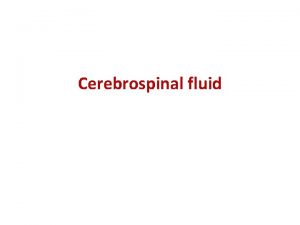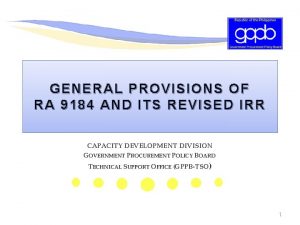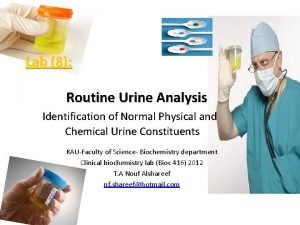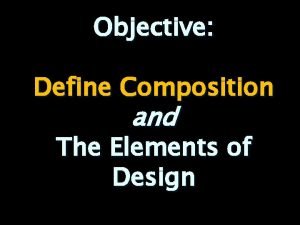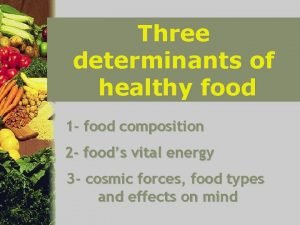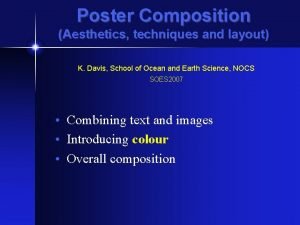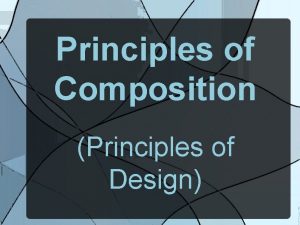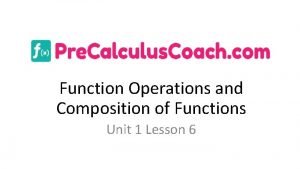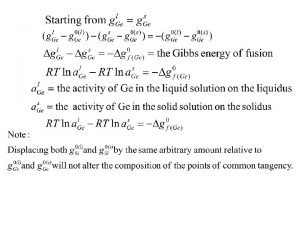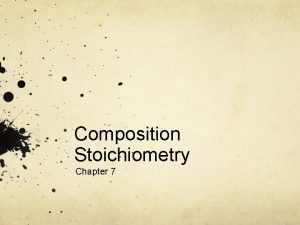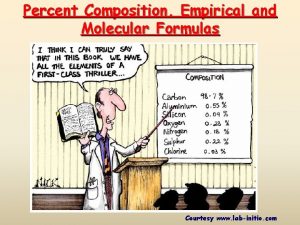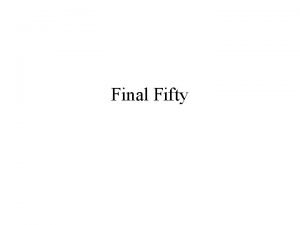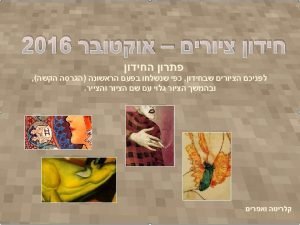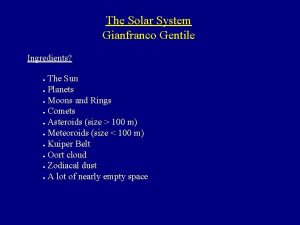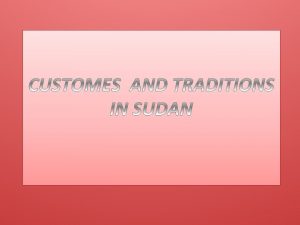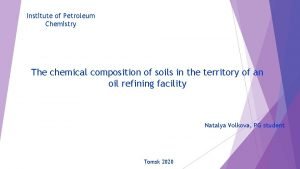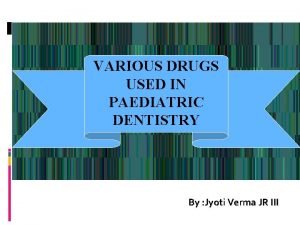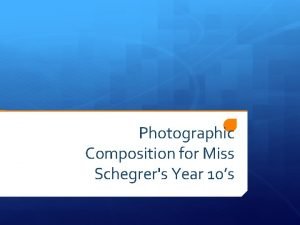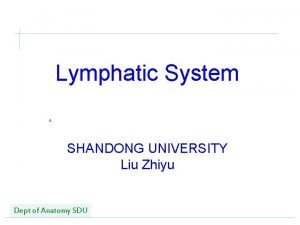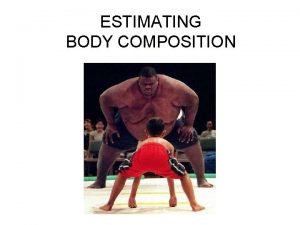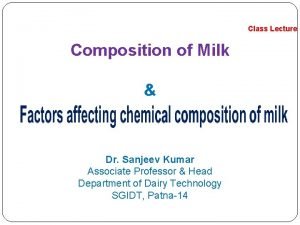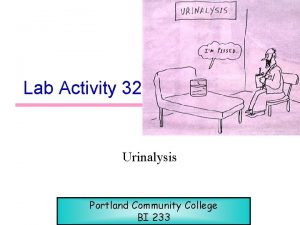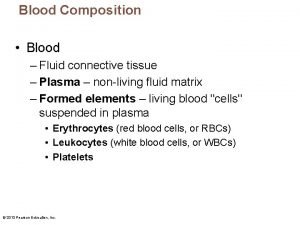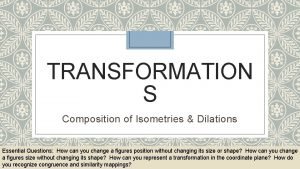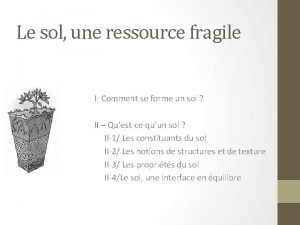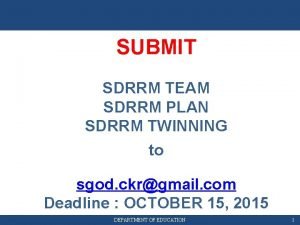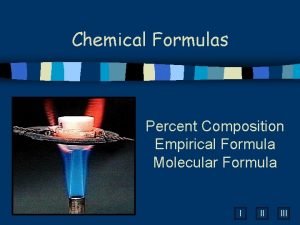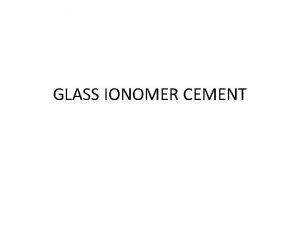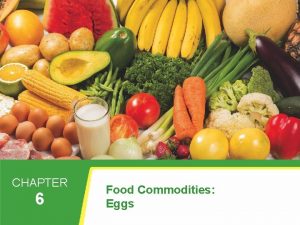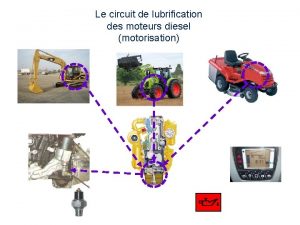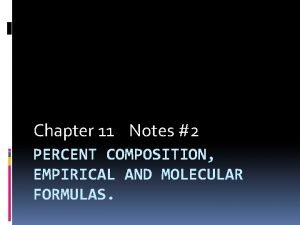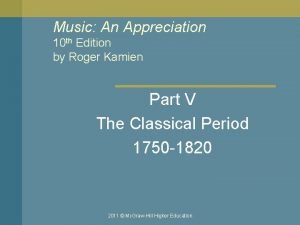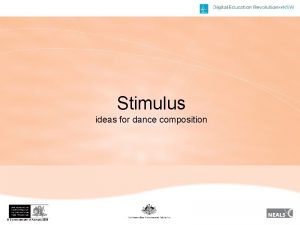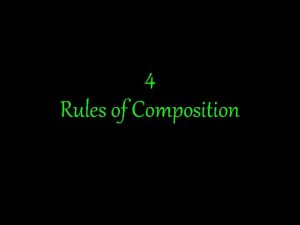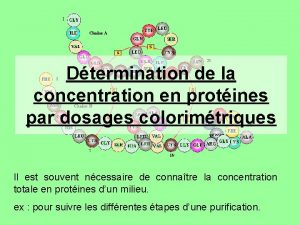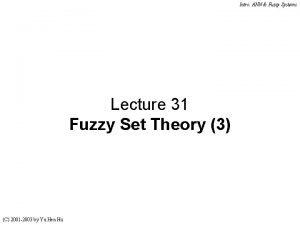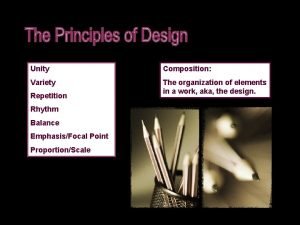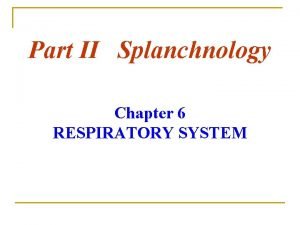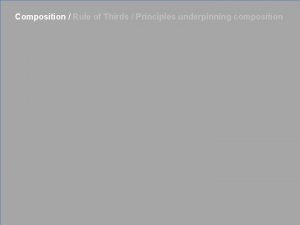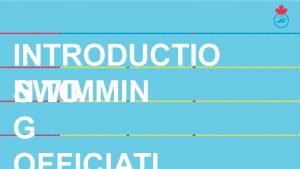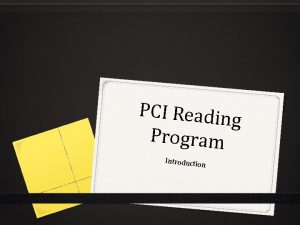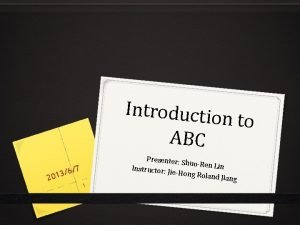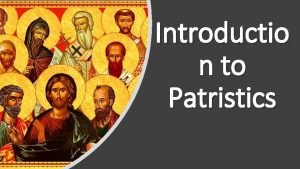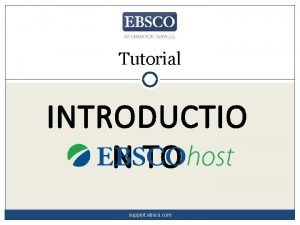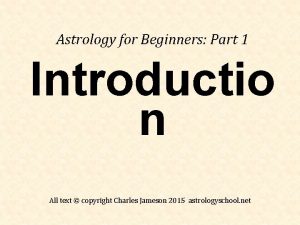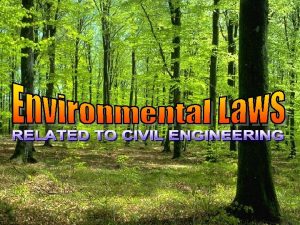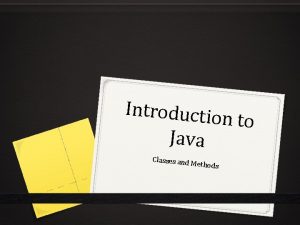Introductio to Splanchnology n Composition q q n







































































- Slides: 71

Introductio to: Splanchnology

n Composition: q q n Alimentary system 消化系统 Respiratory system 呼吸系统 Urinary system 泌尿系统 Reproductive system 生殖系统 Characters of viscera q q Most of viscera organs lies in the thoracic, abdominal and pelvis cavities All of then communicate with external environment through some orifices or channels

Reference lines of thorax n n n n n Anterior median line Sternal line Midclavicular line Parasternal line Anterior axillary line Post axillary line Midaxillary line Scapular line Posterior median line


The abdominal regions Nine regions n Left and right hypochondriac region, epigastric region n L. and R. lateral regions of abdomen, umbilical region n L. and R. inguinal region, pubic region

Four quadrants n n Left and right upper quadrants Left and right lower quadrants

The Respiratory System

Composition n n Respiratory tract q Nose q Pharynx upper respiratory tract q Larynx q Trachea lower respiratory tract q Bronchi Lungs-paired organs of respiration Function: supply the body with oxygen and to get rid of excess carbon dioxide resulting from cell metabolism

The Nose 鼻 External nose: n Root of nose n Back of nose n Apex of nose n Alae of nasi Nasal cavity –divided into two halves by nasal septum

Two parts: n n n Divided by limen nasi 鼻阈 Nasal vestibule Proper nasal cavity Boundaries n n Roof-cribriform plate of ethmoid Floor-hard palate Medial wall-nasal septum Lateral wall q q q Nasal conchae: superior, middle and inferior Nasal meatus: superor, middle and inferior Sphenoethmoidal recess

Remove the middle nasal conchae n Semilunar hiatus 半月裂孔 n Ethmoidal infundibulum 筛漏斗 n Ethmoidal bulla 筛泡

Mucous membrane of nose n n Olfactory region嗅区: located upper nasal cavity, above superior, nasal conchae,contains olfactory cells Respiratory region 呼吸区: its function is to warm, moisten, and clean the inspired air

The paranasal sinuses and their site of drainage into the nose Name of sinus Site of drainage Frontal sinus Middle meatus via infundibulum Maxillary sinus Middle meatus through semilunar hiatus Sphenoid sinus Sphenoethmoidal recess Ethmoidal sinuses anterior group middle group posterior group Middle meatus Superior nasal meatus

Frontal sinus Ethmoidal sinuses Maxillary sinus Sphenoid sinus

The Larynx 喉 Position-situated in the anterior part of the neck (below the hyoid bone), and extends from vertebral level of C 4 to C 6

Layngeal cartilages 喉软骨 Thyroid cartilage 甲状软骨 n Shield-shaped cartilage n Laryngeal prominence at base of thyroid notch n Superior thyroid notch, superior and inferior cornua Cricoid cartilage 环状软骨 n Complete ring of cartilage (shaped like a signet ring) n Arch of cricoid cartilage-at level of C 6 n Larnina of cricoid cartilage

Arytenoid 杓状软骨 n Paired, pyramid shaped, articulate with lamina of cricoid cartilage n Vocal process anteriorly, site of posterior attachment of vocal fold n Muscular process Epiglottic cartilage 会厌软骨 leaf-shaped elastic cartilage situated behind the root of the tongue

Laryngeal joints n cricothyroid joint n cricoarytenoid joint Laryngeal ligaments and membrane n Thyroid membrane 甲状舌骨膜-extending from hyoid bone to thyroid cartilage

n Quadrangular membrane 方形膜 q q n Conus elasticus 弹性圆锥 q q q n Between epiglottic, thyroid and arytenoid cartilages Lower free border forms vestibular ligament 前庭韧带 Between arytenoids, thyroid, and cricoid cartilages Upper free border forms vocal ligament 声韧带 Median cricothyroid ligment 环甲正 中韧带:may be site of circothyrotomy during acute respiratory obstruction Cricotracheal ligament 状软骨气管韧带-between cricoid cartilage and first ring of trachea 环

Muscles of larynx n n Increasing tension on the vocal ligament-cricothyroid Decreasing tension on the vocal ligament-thyroarytenoid Opening the glottis-posterior cricoarytenoid Closing the glottis- cricoarytenoid

Laryngeal cavity Aperture of larynx 喉口-bounded by upper border epiglottic cartilage, aryepiglottic folds and interarytenoid notch

Structure features n Two pairs of shelf like folds : q q n Vestibular folds 前庭襞 Vocal folds 声襞 Two fissures q q Rima vestibulithe 前庭裂 Fissure of glottis 声门裂 n n Inter membranous part膜间部 -anterior 3/5, between vocalfolds Inter cartilagrnous part 软骨间部 -posterior 2/5, between arytenoids cartilages

Three parts n Laryngeal vestibule 喉前庭 Extends from the aperture of larynx to the rima vestibuli q Tubercle of epiglottis 会厌结节 Intermedial cavity of larynx喉 中间腔 q Extends from the level of the rima vestibuli to the level of the fissure of glottis q Ventricle of larynx 喉室 -a small recess between vestibular and vocal folds on each side Infraglottic cavity 声门下腔 q extends from the level of the vocal folds to the lower border of the cricoid cartilage q n n

The Trachea 气管 n n Position: extends from the lower border of cricoid cartilage to the level of sternal angle (between T 4-T 5 vertebrae) where it divides into right and left principal bronchi Structure features q Consists of about 16-20 Cshaped incomplete tracheal cartilages for patency connected by smooth muscle and connective q Carina of trachea 气管隆嵴 - ridge of cartilage at bifurcation into principal bronchi

Bronchi 支气管 Right principal bronchus 右主支气管 n n Shorter, wider, and more vertical than the left , is about 2. 5 cm long, Leaves the extend line of the middle line of trachea at 22~ 25 o angle Foreign bodies are therefore more likely to lodge in this bronchus or one of its branches Left principal bronchus 左主支气管 n Narrower, longer, and more horizontal than the right is about 5 cm long, leaves the extend line of the middle line o trachea at about 35~ 36 o angle

The Lungs 肺 Position: located in the thoracic cavity by both sides of mediastinum General features n Cone-shaped, the right lung is shorter and broader, the left one is longer and narrower n Apex of lung-rises 2 ~ 3 cm above the medial third of clavicle into neck n Base-concave, related to diaphragm, also called diaphragmatic surface n Costal surface-large, convex, related to thoracic wall

n Medial surface-concave, related to mediastinum and vertebrae q Hilum of lung 肺门:area on medial surface where structures in root enter or leave lung q Root of lung 肺根 n Contents q q q n n Principal bronchus Pulmonary artery and vein Nerves and lymphatics Surrounded by connective tissue Order of structures in the root of lung q q From before backward: V. A. B. From above downward: § R. -B. A. V. § L. -A. B. V.

Borders q q q Posterior-blunt Inferior- sharp Anterior-sharp n n cardiac notch心切迹 lingual in left lung 左肺小舌 Lobes and Fissure n Right lung q q n Two fissures : horizontal an oblique Three lobes : superior, middle, inferior Left lung q q One fissure : oblique Two lobes : superior and inferior

Bronchial tree支气管树 Each principal bronchus divides into lobar bronchi (two on the left, three on the right), each of which supplies a lobe of lung. Each lobar bronchus then divided into segmental bronchi, which supply specific segments of the lung.

Bronchopulmonary segments支气管 n Wedge shaped, with the base lying peripherally and the 肺段 n n apex lying towards the root of lungs, ten in each lung Each with a segmental bronchus and branches of pulmonary artery The veins lie both in and between segments

The Pleura 胸膜 General features n n Serous membranes forming closed sacs Two layers q q Visceral pleura-adheres to lung, continuous with parietal pleura at root of lung Parietal pleura-lines the thoracic cavity

Two pleural layers continue with each other at root of lung forming closed potential space-pleural cavity 胸膜腔 q q Contains a small amount pleural fluid Subatmospheric pressure in it

Named parts of parietal pleura n n Cupula of pleura 胸膜顶 -extends up into the neck, over the apex of lung, 2~ 3 cm above the medial third of clavicle Costal pleura 肋胸膜 -lines the inner surface of the wall of the chest Mediastinal pleura 纵隔胸膜 q Lines mediastinum q Pulmonary ligament 肺韧带 -redundant pleura at root of lung, which extends downward, allows movement of structures forming root of lung Diaphragmatic pleura 膈胸膜- Lines diaphragm

Pleura recesses 胸膜隐窝- n n potential spaces of pleural cavity which lungs are not occupied in quiet respiration Costodiaphragmatic recesse肋 膈隐窝-are the slit-like intervals between costal and diaphragmatic pleurae on each side, the lowest point of pleural cavity Costomediastinal recess 肋 纵隔隐窝-on the left side between the mediastinal pleural and costal pleura

The surface projection of lower border of lung and pleurae Lower border Midclavicular lines Midaxillary lines Sides of the vertebral column Lungs 6 th rib 8 th rib 10 th rib Pleura 8 th rib 10 th rib 12 th rib


General anatomy of the Digestive System

Introduction n Structure of the digestive system q q A tube that extends from mouth to anus Accessory organs are attached n Functions q q q Ingestion Movement Digestion Absorption Defecation include

Overview of Digestive System

n n Histological Same basic Organization arrangement of tissues from esophagus to anal canal Four layers (from innermost to outermost) q Mucosa q Submucosa q Muscularis q Serosa

Movement and Mixing of Digestive Materials n n Peristalsis q Coordinated motion of two muscular layers q Circular muscles contract, then longitudinal muscles Segmentation q q q Mixing of food Circular muscles in two areas contract Longitudinal muscles alternately contract & relax

The Oral Cavity n Structure q q Lined with stratified squamous epithelium Lips surround the opening Roof is formed from the hard & soft palate Tongue dominates the floor n Functions q q Take in food Prepare food for digestion

The Tongue n Structure q q q Skeletal muscle covered with mucosa The lingual frenulum connects the tongue to the floor of the mouth Surface n Papillae n Functions q Maneuvers food

n n Salivary Glands Found outside mouth Ducts carry saliva to mouth 3 pairs q Parotid glands q Submandibular glands q Sublingual glands Saliva q Functions n Keeps mucous membranes moist n Lubricates food n Dissolves food n Begins carbohydrate digestion

n n n n 2 sets q Deciduous (20) q Permanent (32) Held in sockets Gingiva = gums Structure q Crown q Root q Neck Composition q Dentin q Enamel q Cementum Dental caries Wisdom teeth Teeth

The Pharynx and Esophagus n n Food enters the esophagus from the pharynx The esophagus is a muscular tube behind the trachea q Food is moved by peristalsis from the pharynx to the stomach q Cardiac sphincter separates esophagus from stomach





Stomach

n n n The Stomach Same 4 basic layers When the stomach is empty, the mucosa lies in large folds q Rugae Pyloric sphincter separates stomach from small intestine

Histology of the Stomach n n Mucosa is simple columnar epithelium with goblet cells Mucosa is folded to form gastric pits q Gastric glands secrete gastric juice

Gastric Gland n Several kinds of cells produce substances that form gastric juice q Mucus cells q Chief cells q Parietal cells q Enteroendocrine cells

Functions of the n Mechanical digestion Stomach Food reaches pylorus q n Chemical q digestion Digestion of proteins n Absorption q q No food Water, electrolytes Some drugs Alcohol

n n The Small Intestine About 18 feet long The duodenum q About 8 inches long q Common bile duct & pancreatic duct empty here The jejunum q About 8 feet long q Most digestion occurs here The ileum q About 9. 5 feet long q Most absorption occurs here q Ends in the ileocecal valve

A Villus

Functions of the Small Intestine n Chyme down q q q is further broken Proteins Carbohydrates Fats n Most absorption is in the small intestine

The Large Intestine (Colon) n n n About 4. 5 feet long Mesocolon supports Begins with the cecum Appendix is attached Ascending colon Transverse colon Descending colon Sigmoid colon Colon connects to rectum Rectum connects to anal canal Empties to the exterior through the anus

Histology and Functions of the Large Intestine n n n Mucosa - simple columnar epithelium q Completion of absorption q Formation of feces Lots of mucus glands Expulsion of feces from the body

Digestion in the Large Intestine n Mechanical q q q Regulated by the ileocecal valve Mixing and peristalsis Mass peristalsis n Chemical q q q Mucus secreted No enzymes Bacteria – prepare chyme for elimination

Feces Formation & Defecation n Chyme is now solid or semi-solid - feces Large intestine absorbs any more water and electrolytes from feces Defecation q Mass peristalsis pushes fecal material into rectum q Rectum stretches n Defecation reflex

Accessory Organs n Liver n Pancreas n Gall bladder

The Liver n n n Performs many lifesustaining functions Location – under the diaphragm on the right q Connected to the diaphragm by the falciform ligament Divided into lobes q Right lobe q Left lobe q Caudate lobe q Quadrate lobe

Histology of the Liver n n Outside is a capsule Composed of tiny lobules Each lobule is surrounded by liver cells and sinusoids q Hepatocytes q Kupffer cells Bile ducts run between liver cells

Functions of the Liver n Produces bile – the primary digestive function q Composition n n q Water Bile salts Cholesterol Pigments q Bilirubin Digestive function n Emulsification of fats

Other Functions of the Liver n n n Absorbs and stores iron, vitamins A, D, E, B 7, K Detoxifies toxins and hormones Metabolizes proteins, carbohydrates, and lipids Removes bacteria from the blood Produces plasma proteins Removes worn-out and damaged red blood cells

The Gallbladder n n n Location – underside of right lobe of liver Function – concentrate and store bile q Collected from liver n Hepatic ducts q Adds bile to duodenum n Cystic duct n Common bile duct Gallstones

n n The Pancreas Location – in the curvature of the duodenum Connected to the duodenum by the pancreatic duct Produces pancreatic juice Functions q Exocrine - digestion of all nutrient groups q Endocrine – control blood glucose level


 Midclavicular line
Midclavicular line Guernica composition pyramidale
Guernica composition pyramidale Hasty generalization fallacy examples
Hasty generalization fallacy examples Google.com
Google.com Photography composition exercises
Photography composition exercises Fragment 2 for composition vii, 1913.
Fragment 2 for composition vii, 1913. Pie chart of composition of soil
Pie chart of composition of soil School grievance committee deped
School grievance committee deped Zdc v2
Zdc v2 Samilin syrup composition
Samilin syrup composition Difference between human milk and cow milk
Difference between human milk and cow milk Private in uml
Private in uml What is a matter flow chart
What is a matter flow chart Composition of transformations: rigid motions
Composition of transformations: rigid motions Appareil juxta-glomérulaire
Appareil juxta-glomérulaire Composition of blood
Composition of blood Body composition facts
Body composition facts Function of blood group
Function of blood group Courtesy formulas
Courtesy formulas Percent composition gas chromatography
Percent composition gas chromatography Sulphur oxide
Sulphur oxide Composition style
Composition style Cerebrospinal fluid composition
Cerebrospinal fluid composition Review of r.a 9184 belongs to ncrps what cluster
Review of r.a 9184 belongs to ncrps what cluster Normal constituents of urine
Normal constituents of urine Define composition in art
Define composition in art Healthy food composition
Healthy food composition Poster composition and layout
Poster composition and layout Angelo sargenti technique
Angelo sargenti technique Venkatraman ramakrishnan medium
Venkatraman ramakrishnan medium Principles of composition
Principles of composition Operations of functions
Operations of functions Pressure composition phase diagram
Pressure composition phase diagram How to find percent mass
How to find percent mass Find the empirical/simplest formula fe
Find the empirical/simplest formula fe Courtesy formulas
Courtesy formulas Composition with red, yellow, blue, and black
Composition with red, yellow, blue, and black Composition 6 kandinsky
Composition 6 kandinsky Gianfranco gentile
Gianfranco gentile تعبير عن sudanese hospitality
تعبير عن sudanese hospitality Composition of petroleum
Composition of petroleum Biocilin 250
Biocilin 250 Endomoph
Endomoph Mining company profiles
Mining company profiles What is “photographic composition”? *
What is “photographic composition”? * Lymphatic drainage of thorax
Lymphatic drainage of thorax Classification of matter section 1 composition of matter
Classification of matter section 1 composition of matter Body composition refers to the
Body composition refers to the Composition of milk
Composition of milk Composition of normal urine
Composition of normal urine Grave bitume composition
Grave bitume composition Composition terre
Composition terre What is wordsworth theory of poetry
What is wordsworth theory of poetry Nerlandais
Nerlandais Blood composition
Blood composition Lesson 6 compositions of isometries
Lesson 6 compositions of isometries Le sol est une ressource fragile car
Le sol est une ressource fragile car Composition copyright example
Composition copyright example Immiscible
Immiscible Filament bending
Filament bending Sdrrmc meaning
Sdrrmc meaning Percentage composition of h2o
Percentage composition of h2o Type 4 gic
Type 4 gic Yolk composition
Yolk composition Système de graissage moteur
Système de graissage moteur Percentage composition notes
Percentage composition notes In the classical period serious composition was flavored by
In the classical period serious composition was flavored by What is stimuli in dance
What is stimuli in dance Rule of thirda
Rule of thirda Réactif de gornall composition
Réactif de gornall composition Max-min
Max-min Unity composition
Unity composition
